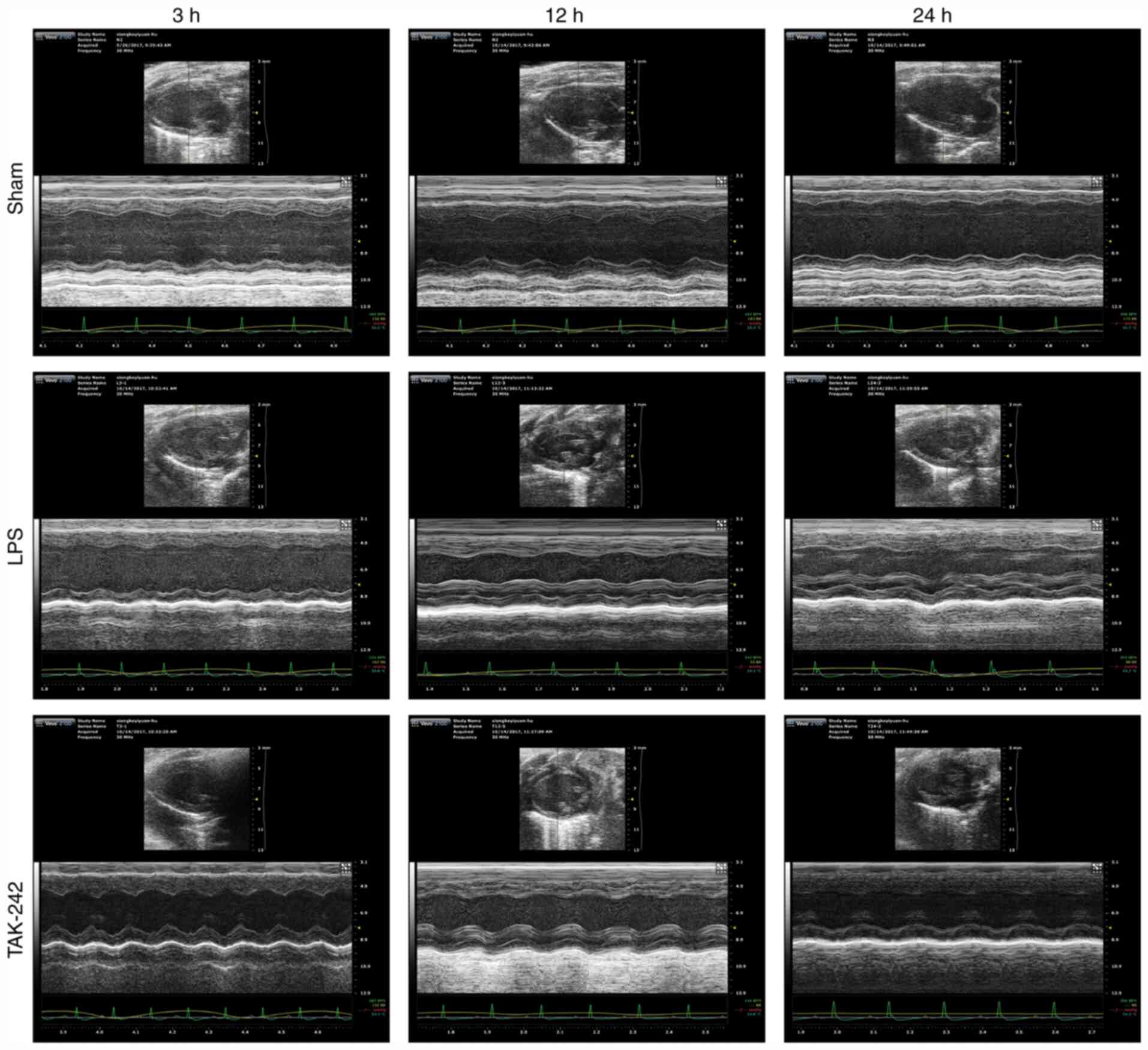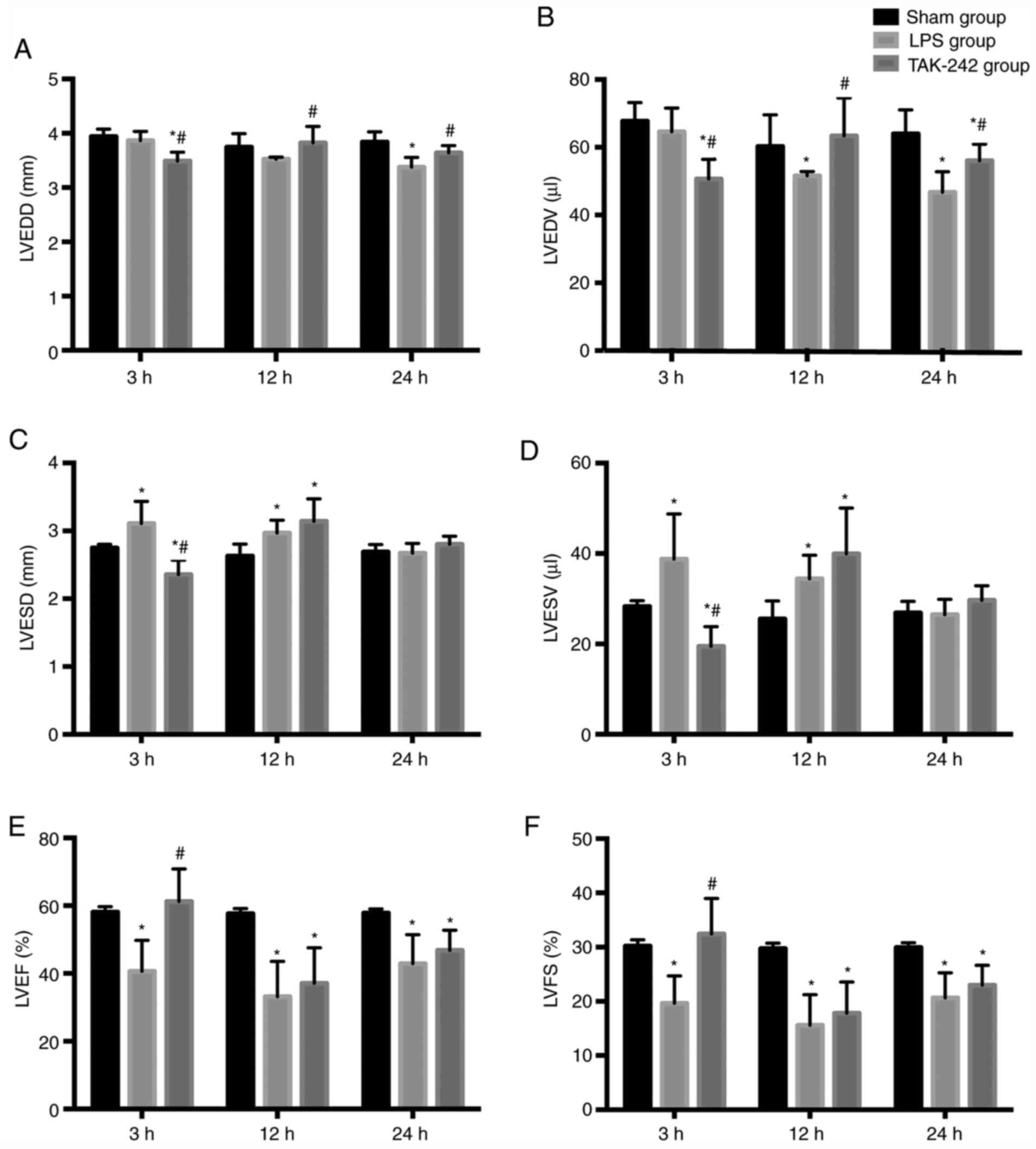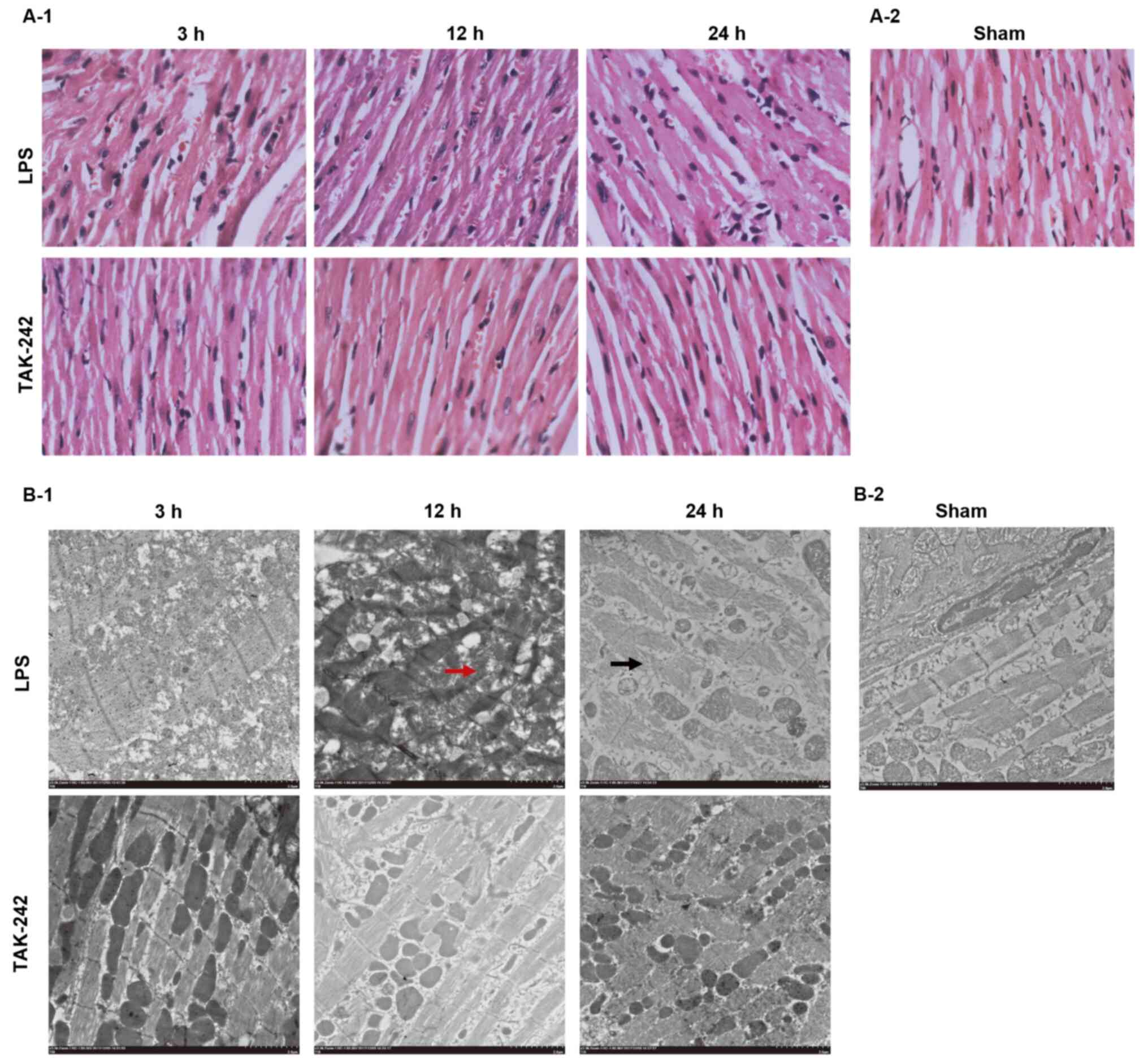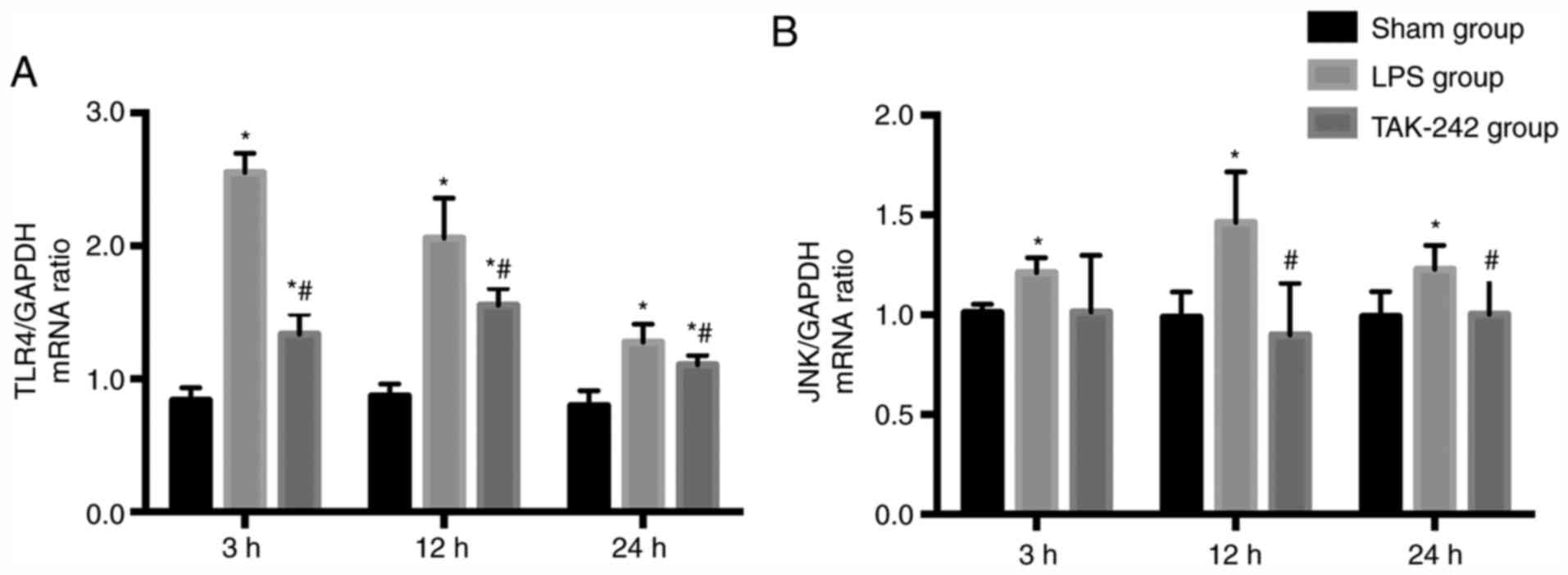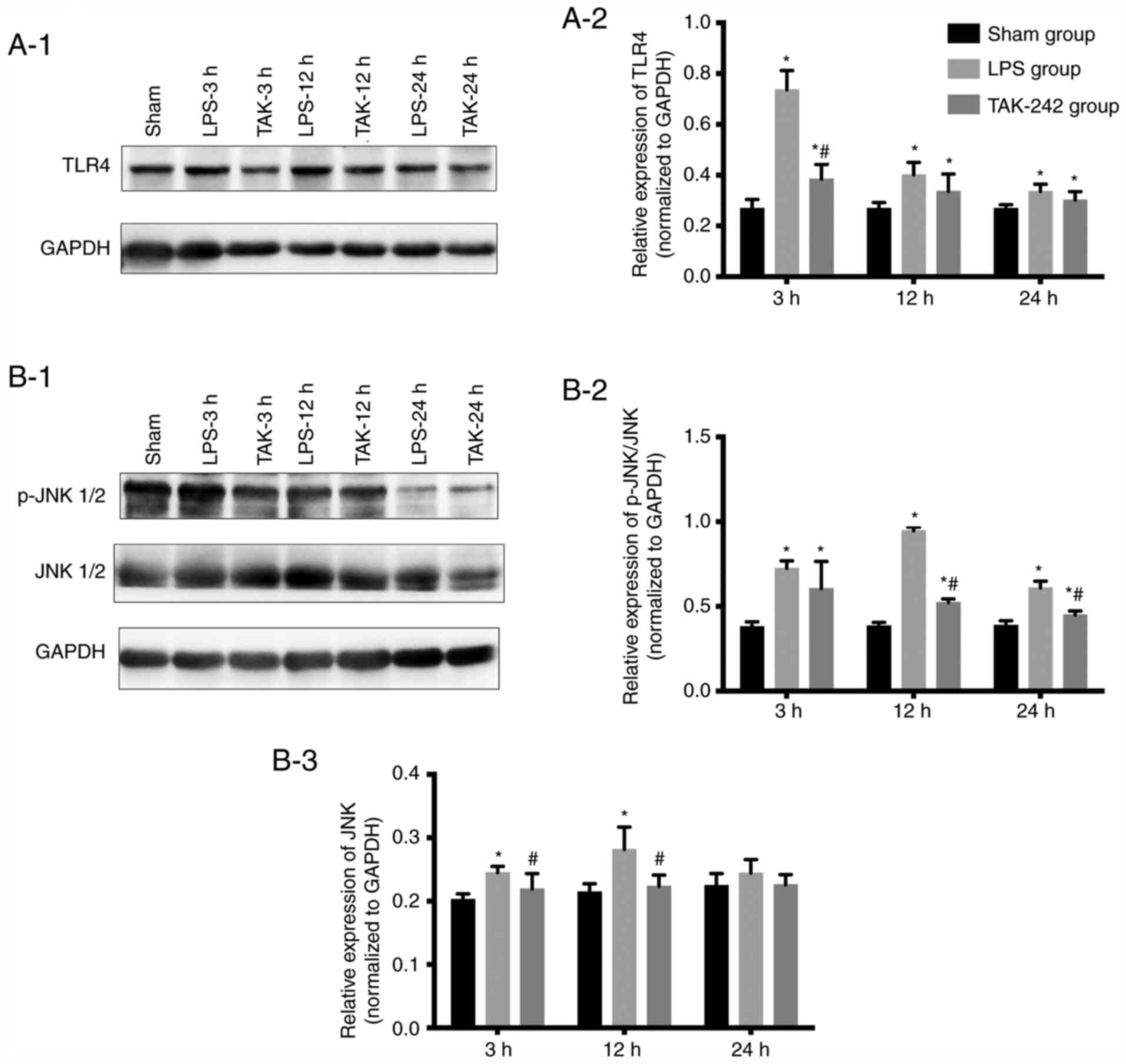|
1
|
Singer M, Deutschman CS, Seymour CW,
Shankar-Hari M, Annane D, Bauer M, Bellomo R, Bernard GR, Chiche
JD, Coopersmith CM, et al: The third international consensus
definitions for sepsis and septic shock (Sepsis-3). JAMA.
315:801–810. 2016. View Article : Google Scholar : PubMed/NCBI
|
|
2
|
Markwart R, Saito H, Harder T, Tomczyk S,
Cassini A, Fleischmann-Struzek C, Reichert F, Eckmanns T and
Allegranzi B: Epidemiology and burden of sepsis acquired in
hospitals and intensive care units: A systematic review and
meta-analysis. Intensive Care Med. 46:1536–1551. 2020. View Article : Google Scholar : PubMed/NCBI
|
|
3
|
Rudd KE, Johnson SC, Agesa KM, Shackelford
KA, Tsoi D, Kievlan DR, Colombara DV, Ikuta KS, Kissoon N, Finfer
S, et al: Global, regional, and national sepsis incidence and
mortality, 1990–2017: Analysis for the Global Burden of Disease
Study. Lancet. 395:200–211. 2020. View Article : Google Scholar : PubMed/NCBI
|
|
4
|
Antonucci E, Fiaccadori E, Donadello K,
Taccone FS, Franchi F and Scolletta S: Myocardial depression in
sepsis: From pathogenesis to clinical manifestations and treatment.
J Crit Care. 29:500–511. 2014. View Article : Google Scholar : PubMed/NCBI
|
|
5
|
Buras JA, Holzmann B and Sitkovsky M:
Animal models of sepsis: Setting the stage. Nat Rev Drug Discov.
4:854–865. 2005. View
Article : Google Scholar : PubMed/NCBI
|
|
6
|
Fallach R, Shainberg A, Avlas O, Fainblut
M, Chepurko Y, Porat E and Hochhauser E: Cardiomyocyte Toll-like
receptor 4 is involved in heart dysfunction following septic shock
or myocardial ischemia. J Mol Cell Cardiol. 48:1236–1244. 2010.
View Article : Google Scholar : PubMed/NCBI
|
|
7
|
Suffredini AF, Fromm RE, Parker MM,
Brenner M, Kovacs JA, Wesley RA and Parrillo JE: The cardiovascular
response of normal humans to the administration of endotoxin. N
Engl J Med. 321:280–287. 1989. View Article : Google Scholar : PubMed/NCBI
|
|
8
|
Fenton KE and Parker MM: Cardiac function
and dysfunction in sepsis. Clin Chest Med. 37:289–298. 2016.
View Article : Google Scholar : PubMed/NCBI
|
|
9
|
Gay NJ, Symmons MF, Gangloff M and Bryant
CE: Assembly and localization of Toll-like receptor signalling
complexes. Nat Rev Immunol. 14:546–558. 2014. View Article : Google Scholar : PubMed/NCBI
|
|
10
|
Conejeros I, Gibson AJ, Werling D,
Muñoz-Caro T, Hermosilla C, Taubert A and Burgos RA: Effect of the
synthetic Toll-like receptor ligands LPS, Pam3CSK4, HKLM and FSL-1
in the function of bovine polymorphonuclear neutrophils. Dev Comp
Immunol. 52:215–225. 2015. View Article : Google Scholar : PubMed/NCBI
|
|
11
|
Song Y, Liu X, Yue H, Ji J, Dou H and Hou
Y: Anti-inflammatory effects of benzenediamine derivate FC-98 on
sepsis injury in mice via suppression of JNK, NF-κB and IRF3
signaling pathways. Mol Immunol. 67:183–192. 2015. View Article : Google Scholar : PubMed/NCBI
|
|
12
|
Chang C, Zhang C, Zhao X, Kuang X, Tang H
and Xiao X: Differential regulation of mitogen-activated protein
kinase signaling pathways in human with different types of mitral
valvular disease. J Surg Res. 181:49–59. 2013. View Article : Google Scholar : PubMed/NCBI
|
|
13
|
Sabio G and Davis RJ: TNF and MAP kinase
signalling pathways. Semin Immunol. 26:237–245. 2014. View Article : Google Scholar : PubMed/NCBI
|
|
14
|
Plotnikov A, Zehorai E, Procaccia S and
Seger R: The MAPK cascades: Signaling components, nuclear roles and
mechanisms of nuclear translocation. Biochim Biophys Acta.
1813:1619–1633. 2011. View Article : Google Scholar : PubMed/NCBI
|
|
15
|
Feng F, Qi Y, Dong C and Yang C: PVT1
regulates inflammation and cardiac function via the MAPK/NF-κB
pathway in a sepsis model. Exp Ther Med. 16:4471–4478.
2018.PubMed/NCBI
|
|
16
|
Lee SM, Suk K and Lee WH: Myristoylated
alanine-rich C kinase substrate (MARCKS) regulates the expression
of proinflammatory cytokines in macrophages through activation of
p38/JNK MAPK and NF-κB. Cell Immunol. 296:115–121. 2015. View Article : Google Scholar : PubMed/NCBI
|
|
17
|
Wang Z, Wu Q, Nie X, Guo J and Yang C:
Infusion of esmolol attenuates lipopolysaccharide-induced
myocardial dysfunction. J Surg Res. 200:283–289. 2016. View Article : Google Scholar : PubMed/NCBI
|
|
18
|
Peng T, Zhang T, Lu X and Feng Q:
JNK1/c-fos inhibits cardiomyocyte TNF-alpha expression via a
negative crosstalk with ERK and p38 MAPK in endotoxaemia.
Cardiovasc Res. 81:733–741. 2009. View Article : Google Scholar : PubMed/NCBI
|
|
19
|
Hu L, Li P, Chang C, Liu S, Song Y, Zhao F
and Liu T: Establishment and evaluation of mouse models of septic
myocardial injury. Zhonghua Wei Zhong Bing Ji Jiu Yi Xue.
30:342–345. 2018.(In Chinese). PubMed/NCBI
|
|
20
|
Chen J, Wei J, Wang L, Zhu Y, Li L, Akinyi
M, Gao X and Fan G: Cardioprotection against ischemia/reperfusion
injury by QiShenYiQi Pill® via ameliorate of multiple
mitochondrial dysfunctions. Drug Des Devel Ther. 9:3051–3066. 2015.
View Article : Google Scholar : PubMed/NCBI
|
|
21
|
Täng MS, Redfors B, Shao Y and Omerovic E:
Velocity vector imaging fails to quantify regional myocardial
dysfunction in a mouse model of isoprenaline-induced
cardiotoxicity. Echocardiography. 29:818–826. 2012. View Article : Google Scholar : PubMed/NCBI
|
|
22
|
Teng B, Tilley SL, Ledent C and Mustafa
SJ: In vivo assessment of coronary flow and cardiac function after
bolus adenosine injection in adenosine receptor knockout mice.
Physiol Rep. 4:42016. View Article : Google Scholar
|
|
23
|
Wang GQ, Tang T, Wang ZS, Liu YY, Wang L,
Luo PF and Xia ZF: Overexpression of hypo-phosphorylated iκBβ at
Ser313 protects the heart against sepsis. PLoS One.
11:e01608602016. View Article : Google Scholar : PubMed/NCBI
|
|
24
|
Kenneth J: Livak, Thomas D. Schmittgen;
Analysis of relative gene expression data using real-time
quantitative PCR and the 2−ΔΔCT method. Methods.
25:402–408. 2001. View Article : Google Scholar : PubMed/NCBI
|
|
25
|
Iskander KN, Osuchowski MF,
Stearns-Kurosawa DJ, Kurosawa S, Stepien D, Valentine C and Remick
DG: Sepsis: Multiple abnormalities, heterogeneous responses, and
evolving understanding. Physiol Rev. 93:1247–1288. 2013. View Article : Google Scholar : PubMed/NCBI
|
|
26
|
Lilley E, Armstrong R, Clark N, Gray P,
Hawkins P, Mason K, López-Salesansky N, Stark AK, Jackson SK,
Thiemermann C, et al: Refinement of animal models of sepsis and
septic shock. Shock. 43:304–316. 2015. View Article : Google Scholar : PubMed/NCBI
|
|
27
|
Kuzmich NN, Sivak KV, Chubarev VN, Porozov
YB, Savateeva-Lyubimova TN and Peri F: TLR4 signaling pathway
modulators as potential therapeutics in inflammation and sepsis.
Vaccines (Basel). 5:52017.
|
|
28
|
Beutler B, Du X and Poltorak A:
Identification of Toll-like receptor 4 (Tlr4) as the sole conduit
for LPS signal transduction: Genetic and evolutionary studies. J
Endotoxin Res. 7:277–280. 2001. View Article : Google Scholar : PubMed/NCBI
|
|
29
|
Płóciennikowska A, Hromada-Judycka A,
Borzęcka K and Kwiatkowska K: Co-operation of TLR4 and raft
proteins in LPS-induced pro-inflammatory signaling. Cell Mol Life
Sci. 72:557–581. 2015. View Article : Google Scholar : PubMed/NCBI
|
|
30
|
Li P, Chen XR, Xu F, Liu C, Li C, Liu H,
Wang H, Sun W, Sheng YH and Kong XQ: Alamandine attenuates
sepsis-associated cardiac dysfunction via inhibiting MAPKs
signaling pathways. Life Sci. 206:106–116. 2018. View Article : Google Scholar : PubMed/NCBI
|
|
31
|
Jeong HS, Lee TH, Bang CH, Kim JH and Hong
SJ: Risk factors and outcomes of sepsis-induced myocardial
dysfunction and stress-induced cardiomyopathy in sepsis or septic
shock: A comparative retrospective study. Medicine (Baltimore).
97:e02632018. View Article : Google Scholar : PubMed/NCBI
|
|
32
|
Sevilla Berrios RA, O'Horo JC, Velagapudi
V and Pulido JN: Correlation of left ventricular systolic
dysfunction determined by low ejection fraction and 30-day
mortality in patients with severe sepsis and septic shock: A
systematic review and meta-analysis. J Crit Care. 29:495–499. 2014.
View Article : Google Scholar : PubMed/NCBI
|
|
33
|
Haileselassie B, Su E, Pozios I, Niño DF,
Liu H, Lu DY, Ventoulis I, Fulton WB, Sodhi CP, Hackam D, et al:
Myocardial oxidative stress correlates with left ventricular
dysfunction on strain echocardiography in a rodent model of sepsis.
Intensive Care Med Exp. 5:212017. View Article : Google Scholar : PubMed/NCBI
|
|
34
|
Vallabhajosyula S, Pruthi S, Shah S, Wiley
BM, Mankad SV and Jentzer JC: Basic and advanced echocardiographic
evaluation of myocardial dysfunction in sepsis and septic shock.
Anaesth Intensive Care. 46:13–24. 2018. View Article : Google Scholar : PubMed/NCBI
|
|
35
|
Hoffman M, Kyriazis ID, Lucchese AM, de
Lucia C, Piedepalumbo M, Bauer M, Schulze PC, Bonios MJ, Koch WJ
and Drosatos K: Myocardial strain and cardiac output are preferable
measurements for cardiac dysfunction and can predict mortality in
septic mice. J Am Heart Assoc. 8:e0122602019. View Article : Google Scholar : PubMed/NCBI
|
|
36
|
Takashima K, Matsunaga N, Yoshimatsu M,
Hazeki K, Kaisho T, Uekata M, Hazeki O, Akira S, Iizawa Y and Ii M:
Analysis of binding site for the novel small-molecule TLR4 signal
transduction inhibitor TAK-242 and its therapeutic effect on mouse
sepsis model. Br J Pharmacol. 157:1250–1262. 2009. View Article : Google Scholar : PubMed/NCBI
|
|
37
|
Sanfilippo F, Corredor C, Fletcher N,
Landesberg G, Benedetto U, Foex P and Cecconi M: Diastolic
dysfunction and mortality in septic patients: A systematic review
and meta-analysis. Intensive Care Med. 41:1004–1013. 2015.
View Article : Google Scholar : PubMed/NCBI
|
|
38
|
Ran S, Bhattarai N, Patel R and
Volk-Draper L: TLR4-induced inflammation is a key promoter of tumor
growth, vascularization, and metastasis. Translational Studies on
Inflammation. 2020. View Article : Google Scholar
|
|
39
|
Lin Y, Xu Y and Zhang Z: Sepsis-induced
myocardial dysfunction (SIMD): The pathophysiological mechanisms
and therapeutic strategies targeting mitochondria. Inflammation.
43:1184–1200. 2020. View Article : Google Scholar : PubMed/NCBI
|
|
40
|
Fan TT, Feng XY, Yang YZ, Gao F and Liu Q:
Downregulation of PI3K-γ in a mouse model of sepsis-induced
myocardial dysfunction. Cytokine. 96:208–216. 2017. View Article : Google Scholar : PubMed/NCBI
|
|
41
|
Cheng H, Fan WZ, Wang SC, Liu ZH, Zang HL,
Wang LZ, Liu HJ, Shen XH and Liang SQ: N-terminal pro-brain
natriuretic peptide and cardiac troponin I for the prognostic
utility in elderly patients with severe sepsis or septic shock in
intensive care unit: A retrospective study. J Crit Care.
30:654.e9–654.e14. 2015. View Article : Google Scholar
|
|
42
|
Klouche K, Pommet S, Amigues L, Bargnoux
AS, Dupuy AM, Machado S, Serveaux-Delous M, Morena M, Jonquet O and
Cristol JP: Plasma brain natriuretic peptide and troponin levels in
severe sepsis and septic shock: Relationships with systolic
myocardial dysfunction and intensive care unit mortality. J
Intensive Care Med. 29:229–237. 2014. View Article : Google Scholar : PubMed/NCBI
|
|
43
|
Zhang T, Yan T, Du J, Wang S and Yang H:
Apigenin attenuates heart injury in lipopolysaccharide-induced
endotoxemic model by suppressing sphingosine kinase 1/sphingosine
1-phosphate signaling pathway. Chem Biol Interact. 233:46–55. 2015.
View Article : Google Scholar : PubMed/NCBI
|
|
44
|
Yu X, Jia B, Wang F, Lv X, Peng X, Wang Y,
Li H, Wang Y, Lu D and Wang H: α1 adrenoceptor
activation by norepinephrine inhibits LPS-induced cardiomyocyte
TNF-α production via modulating ERK1/2 and NF-κB pathway. J Cell
Mol Med. 18:263–273. 2014. View Article : Google Scholar : PubMed/NCBI
|
|
45
|
Wang Z, Bu L, Yang P, Feng S and Xu F:
Alleviation of sepsis induced cardiac dysfunction by overexpression
of Sestrin2 is associated with inhibition of p S6K and activation
of the pAMPK pathway. Mol Med Rep. 20:2511–2518. 2019.PubMed/NCBI
|
|
46
|
Suzuki T, Suzuki Y, Okuda J, Kurazumi T,
Suhara T, Ueda T, Nagata H and Morisaki H: Sepsis-induced cardiac
dysfunction and β-adrenergic blockade therapy for sepsis. J
Intensive Care. 5:222017. View Article : Google Scholar : PubMed/NCBI
|
|
47
|
Zhang X, Li M, Wang H and Astragaloside
IV: Astragaloside IV alleviates the myocardial damage induced by
lipopolysaccharide via the Toll-like receptor 4 (TLR4)/nuclear
factor kappa B (NF-κB)/proliferator-activated receptor α (PPARα)
signaling pathway. Med Sci Monit. 25:7158–7168. 2019. View Article : Google Scholar : PubMed/NCBI
|
|
48
|
Natanson C, Eichenholz PW, Danner RL,
Eichacker PQ, Hoffman WD, Kuo GC, Banks SM, MacVittie TJ and
Parrillo JE: Endotoxin and tumor necrosis factor challenges in dogs
simulate the cardiovascular profile of human septic shock. J Exp
Med. 169:823–832. 1989. View Article : Google Scholar : PubMed/NCBI
|
|
49
|
Cain BS, Meldrum DR, Dinarello CA, Meng X,
Joo KS, Banerjee A and Harken AH: Tumor necrosis factor-alpha and
interleukin-1beta synergistically depress human myocardial
function. Crit Care Med. 27:1309–1318. 1999. View Article : Google Scholar : PubMed/NCBI
|
|
50
|
Boillot A, Capellier G, Racadot E,
Wijdenes J, Herve P and Barale F: Pilot clinical trial of an
anti-TNF alpha monoclonal antibody for the treatment of septic
shock. Clin Intensive Care. 6:52–56. 1995. View Article : Google Scholar : PubMed/NCBI
|
|
51
|
Herbertson MJ, Werner HA, Goddard CM,
Russell JA, Wheeler A, Coxon R and Walley KR: Anti-tumor necrosis
factor-alpha prevents decreased ventricular contractility in
endotoxemic pigs. Am J Respir Crit Care Med. 152:480–488. 1995.
View Article : Google Scholar : PubMed/NCBI
|















